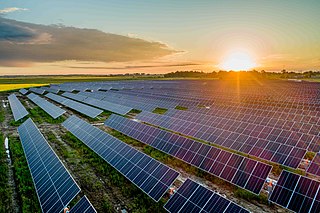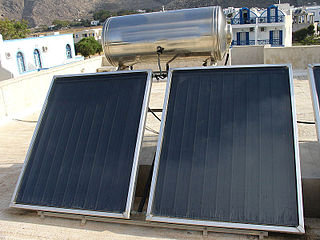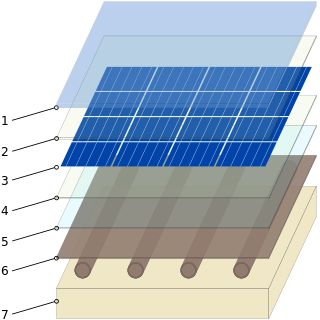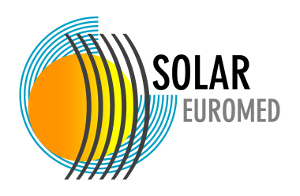Tasks
Programs are carried out under the framework of an Implementing Agreement, signed by contracting parties to the agreement - these include government agencies and government-designated entities of the countries involved. Implementing Agreements offer the framework for collaborative research projects.
Within SolarPACES, individual research, development and demonstration projects are organised within related Tasks. There are six tasks currently being undertaken by the SolarPACES Program:
Task I: Solar Thermal Electric Systems
Task II: Solar Chemistry Research
The primary objective of Task II – Solar Chemistry R&D – is to develop and optimize solar-driven thermochemical processes and to demonstrate their technical and economic feasibility at an industrial scale:
1. Production of energy carriers: conversion of solar energy into chemical fuels that can be stored longterm and transported long-range. During this term, special focus is on solar thermal production of hydrogen and syngas.
2. Processing of chemical commodities: use of solar energy for processing energy-intensive, high-temperature materials.
3. Detoxification and recycling of waste materials: use of solar energy for detoxification and recycling of hazardous waste and of secondary raw materials.
Task III: Solar Technology and Advanced Applications
Task IV: SHIP - Solar Heat for Industrial Processes
Solar Heat Integration in Industrial Processes is a collaborative project of the IEA's Solar Heating and Cooling, Task 49, and SolarPACES Program. The purpose of the project is to provide the knowledge and technology necessary to foster installation of solar thermal plants for industrial process heat. To do this, studies on the technology's potential are conducted in the participating countries, medium temperature collectors were developed for the production of process heat up to temperature levels of 250 °C, and solutions to the problems involved in integrating solar heat into industrial processes were sought. In addition, demonstration projects were carried out in cooperation with the solar industry.
Task V: Solar Resource Assessment and Forecasting
“Solar Resource Assessment and Forecasting” is a follow up of the earlier SHC-Task-36 named “Solar Resource Knowledge Management”.
The task now focuses primarily on the two most important topics in the field of solar radiation for solar energy applications: For financing the bigger and bigger projects sound solar resource assessments are more and more important. And for operation of the many MW installed power forecasting of solar radiation is receiving high attention from plant and grid operators. In SolarPACES it remains as Task V, but with a new title.
It covers satellite-derived solar resource products, ground-based solar measurements also covering topics not picked up in Task 36 like measuring circumsolar radiation. The Task equally supports solar thermal heating and cooling, photovoltaics and concentrating solar power applications. However, for best serving the objectives of SolarPACES this report focuses on direct solar radiation, which can be concentrated. The four objectives of this Task are:
• Evaluate solar resource variability that impacts large penetrations of solar technologies
• Develop standardized and integrating procedures for data bankability
• Improve procedures for short-term solar resource forecasting
• Advance solar resource modelling procedures based on physical principles
Task VI: Solar Energy and Water Processes and Applications

Solar energy is radiant light and heat from the Sun that is harnessed using a range of technologies such as solar power to generate electricity, solar thermal energy including solar water heating, and solar architecture.

Heat transfer is a discipline of thermal engineering that concerns the generation, use, conversion, and exchange of thermal energy (heat) between physical systems. Heat transfer is classified into various mechanisms, such as thermal conduction, thermal convection, thermal radiation, and transfer of energy by phase changes. Engineers also consider the transfer of mass of differing chemical species, either cold or hot, to achieve heat transfer. While these mechanisms have distinct characteristics, they often occur simultaneously in the same system.

Solar thermal energy (STE) is a form of energy and a technology for harnessing solar energy to generate thermal energy for use in industry, and in the residential and commercial sectors.

Energy development is the field of activities focused on obtaining sources of energy from natural resources. These activities include production of renewable, nuclear, and fossil fuel derived sources of energy, and for the recovery and reuse of energy that would otherwise be wasted. Energy conservation and efficiency measures reduce the demand for energy development, and can have benefits to society with improvements to environmental issues.

A solar thermal collector collects heat by absorbing sunlight. The term "solar collector" commonly refers to a device for solar hot water heating, but may refer to large power generating installations such as solar parabolic troughs and solar towers or non water heating devices such as solar air heaters.
Solar air conditioning refers to any air conditioning (cooling) system that uses solar power.
Sopogy was a solar thermal technology supplier founded in 2002 at the Honolulu, Hawaii-based clean technology incubator known as Energy Laboratories. The company began its research on concentrating solar thermal energy to produce solar steam and thermal heat for absorption chillers or industrial process heat. The company has also developed applications that incorporate its solar collectors to generate electricity and desalination. Sopogy's name origin comes from industry key words "So" from solar "po" from power and "gy" from energy and technology. The company has its OEM and IPP sales teams along with research and development located in Honolulu, and in 2006 expanded its manufacturing, C&I and oil and gas sales teams in its Silicon Valley facility. Pacific Business News and Greentech Media reported that the VC-funded micro-concentrator solar power firm was shutting down operations based on statements from its President David Fernandez, however Hitachi Power Systems acquired Sopogy in a private transaction in 2014.

Concentrated solar power systems generate solar power by using mirrors or lenses to concentrate a large area of sunlight onto a receiver. Electricity is generated when the concentrated light is converted to heat, which drives a heat engine connected to an electrical power generator or powers a thermochemical reaction.
Wizard Power Pty Ltd was an Australian company focused on solar technology research, development and commercialisation. The company was headquartered in Canberra, Australia. The company was wound up in September 2013, owing 8 million dollars to creditors and employees.

Photovoltaic thermal collectors, typically abbreviated as PVT collectors and also known as hybrid solar collectors, photovoltaic thermal solar collectors, PV/T collectors or solar cogeneration systems, are power generation technologies that convert solar radiation into usable thermal and electrical energy. PVT collectors combine photovoltaic solar cells, which convert sunlight into electricity, with a solar thermal collector, which transfers the otherwise unused waste heat from the PV module to a heat transfer fluid. By combining electricity and heat generation within the same component, these technologies can reach a higher overall efficiency than solar photovoltaic (PV) or solar thermal (T) alone.

The Solar Platform of Almería (PSA) is the largest concentrating solar technology research, development and test centre in Europe, situated in the Province of Almería, Spain in Tabernas.
A compact linear Fresnel reflector (CLFR) – also referred to as a concentrating linear Fresnel reflector – is a specific type of linear Fresnel reflector (LFR) technology. They are named for their similarity to a Fresnel lens, in which many small, thin lens fragments are combined to simulate a much thicker simple lens. These mirrors are capable of concentrating the sun's energy to approximately 30 times its normal intensity.

Solar air heating is a solar thermal technology in which the energy from the sun, insolation, is captured by an absorbing medium and used to heat air. Solar air heating is a renewable energy heating technology used to heat or condition air for buildings or process heat applications. It is typically the most cost-effective out of all the solar technologies, especially in commercial and industrial applications, and it addresses the largest usage of building energy in heating climates, which is space heating and industrial process heating.

Solar Euromed is a high technology group based in France specialized in concentrated solar power technology, in activity from 2007 to 2016.

Concentrator photovoltaics (CPV) is a photovoltaic technology that generates electricity from sunlight. Unlike conventional photovoltaic systems, it uses lenses or curved mirrors to focus sunlight onto small, highly efficient, multi-junction (MJ) solar cells. In addition, CPV systems often use solar trackers and sometimes a cooling system to further increase their efficiency.

The International Energy Agency Solar Heating and Cooling Technology Collaboration Programme is one of over 40 multilateral Technology Collaboration Programmes of the International Energy Agency. It was one of the first of such programmes, founded in 1977. Its current mission is to "advance international collaborative efforts for solar energy to reach the goal set in the vision of contributing 50% of the low temperature heating and cooling demand by 2030.". Its international solar collector statistics Solar Heat Worldwide serve as a reference document for governments, financial institutions, consulting firms and non-profit organizations.
Solar energy – radiant light and heat from the sun. It has been harnessed by humans since ancient times using a range of ever-evolving technologies. Solar energy technologies include solar heating, solar photovoltaics, solar thermal electricity and solar architecture, which can make considerable contributions to solving some of the most urgent problems that the world now faces.
The Fraunhofer Institute for Solar Energy Systems ISE is an institute of the Fraunhofer-Gesellschaft. Located in Freiburg, Germany, The Institute performs applied scientific and engineering research and development for all areas of solar energy. Fraunhofer ISE has three external branches in Germany which carry out work on solar cell and semiconductor material development: the Laboratory and Service Center (LSC) in Gelsenkirchen, the Technology Center of Semiconductor Materials (THM) in Freiberg, and the Fraunhofer Center for Silicon Photovoltaics (CSP) in Halle. Since 2006, Prof. Dr. Eicke R. Weber is the director of Fraunhofer ISE. With over 1,100 employees, Fraunhofer ISE is the largest institute for applied solar energy research in Europe. The 2012 Operational Budget including investments is 74.3 million euro.

Nepal Academy of Science and Technology (NAST), previously RONAST, is an autonomous apex body established in 1982 to promote science and technology in Nepal. With the implementation of federal structure by the government of Nepal, it has opened its first provincial office at Mahendranagar.
The low-temperature distillation (LTD) technology is the first implementation of the direct spray distillation (DSD) process. The first large-scale units are now in operation for desalination. The process was first developed by scientists at the University of Applied Sciences in Switzerland, focusing on low-temperature distillation in vacuum conditions, from 2000 to 2005.













